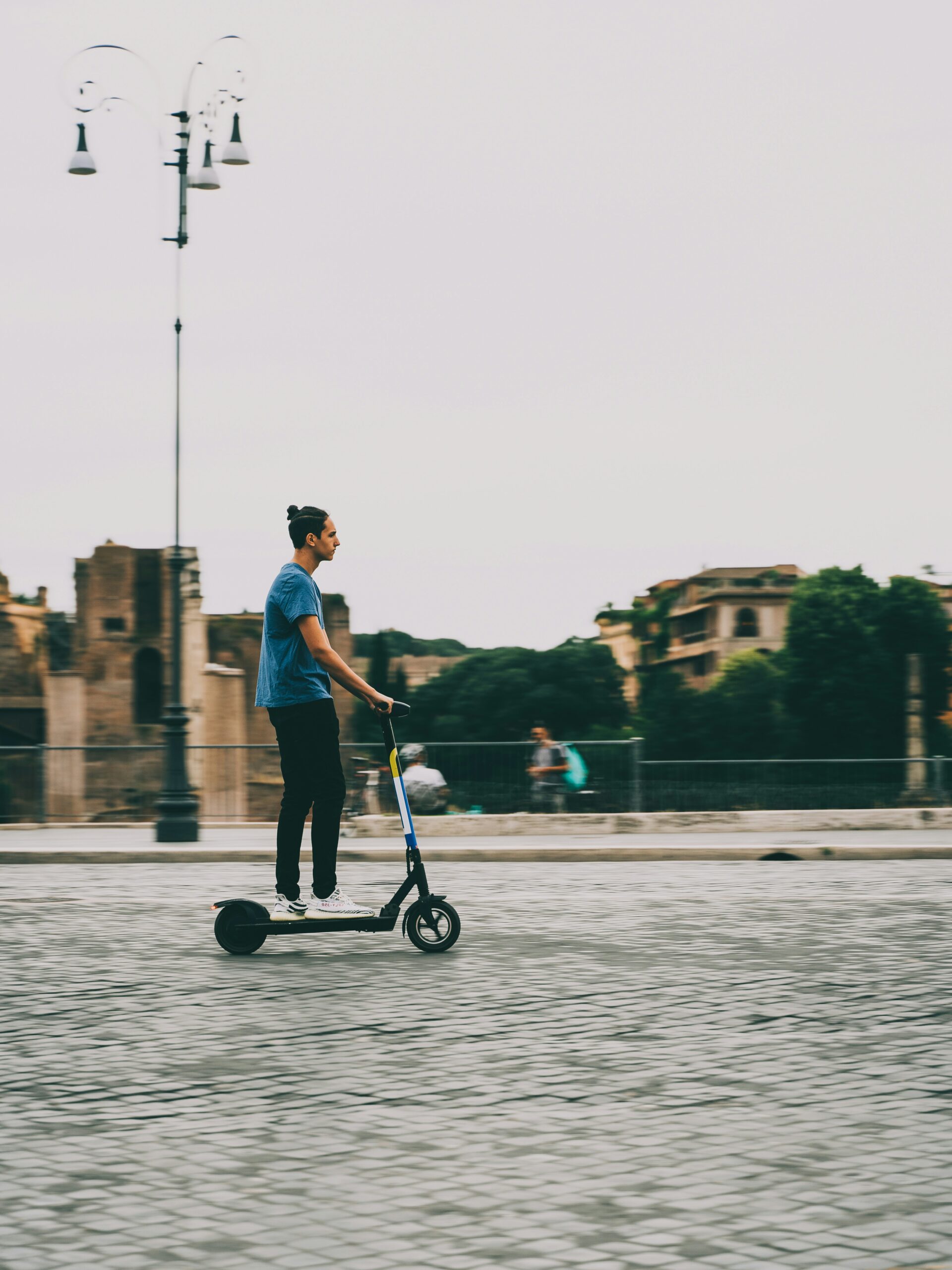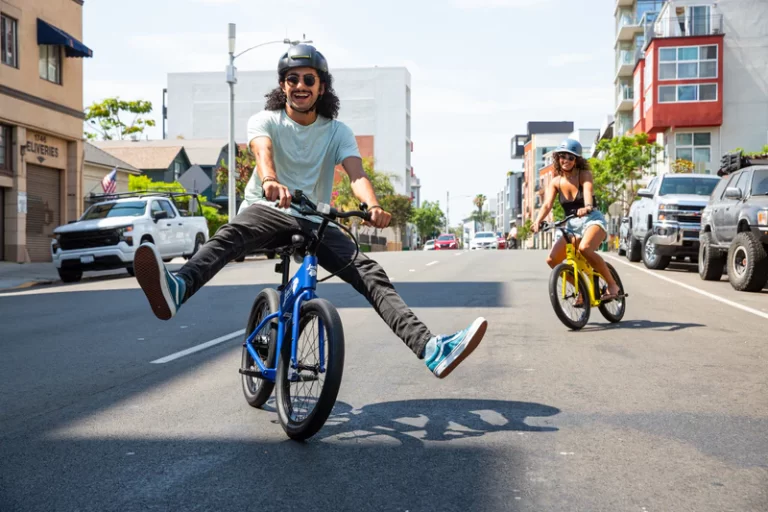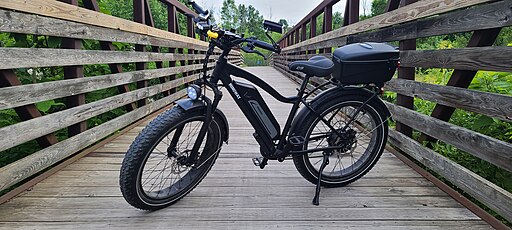5 Common Electric Scooter Problems and How to Fix Them
Last Updated on July 23, 2024 by Kristina Grant
Electric scooters have revolutionized urban transportation, offering a swift, eco-friendly, and fun alternative to traditional modes of commuting. However, like any piece of machinery, they are prone to issues. This guide will delve into the five most common electric scooter problems and provide practical solutions to get you back on the road in no time.
Whether you’re a seasoned scooter commuter or a first-time rider, understanding these potential issues can save you time, money, and frustration. So, let’s dive in and explore the common challenges you might face and how to overcome them.
1. Battery Issues: The Lifeblood of Your Scooter
A healthy battery is essential for a smooth and enjoyable ride. Unfortunately, battery-related problems are a common culprit behind scooter woes. Let’s break down the most frequent issues:
- Reduced Range: As with any battery-powered device, your scooter’s range will gradually decrease over time. Several factors contribute to this, including temperature, riding style, and overall battery health. To maximize your scooter’s range, avoid deep discharges, store it in a cool, dry place, and consider using it within recommended temperature ranges.
- Charging Challenges: Experiencing slow charging or no charging at all can be frustrating. First, check the charger, power outlet, and scooter’s charging port for any obstructions, damage, or loose connections. If the problem persists, there might be an issue with the charger or the scooter’s internal charging circuitry.
- Battery Drain: If your scooter’s battery drains rapidly or doesn’t hold a charge, it could be a sign of a damaged battery cell, internal short circuit, or other underlying issues. In some cases, replacing the battery might be necessary. If your scooter is still under warranty, contacting the manufacturer is advisable.
By understanding these common battery problems and taking preventative measures, you can significantly extend your scooter’s battery life and optimize its performance.
2. Tire Troubles: Keeping Your Scooter Rolling
Your scooter’s tires are crucial for a smooth and safe ride. Unfortunately, tire-related issues are quite common. Let’s explore the two main problems you might encounter:
Flat Tires
Flat tires can be a major inconvenience, but they’re usually easy to fix. Most electric scooters use pneumatic tires, which are similar to bicycle tires. If you find yourself with a flat, you’ll need to repair or replace the inner tube.
- Repairing a Flat: While it’s possible to repair a flat tire yourself, it requires some basic bike repair skills and tools. If you’re not comfortable doing it yourself, it’s best to take your scooter to a bike shop.
- Replacing the Tire: If the tire itself is damaged or worn out, you’ll need to replace it entirely. Make sure to choose a replacement tire that’s compatible with your scooter model.
Low Tire Pressure
Even if your tire isn’t flat, low tire pressure can affect your scooter’s performance and ride quality. Underinflated tires can lead to increased rolling resistance, reduced range, and increased risk of punctures.
- Checking Tire Pressure: Use a bike pump with a pressure gauge to check your tire pressure. The recommended tire pressure is usually printed on the tire sidewall.
- Inflating Your Tires: If your tires are underinflated, use a bike pump to add air until they reach the recommended pressure.
Regularly checking and maintaining your tire pressure is essential for a comfortable and efficient ride.
RELATED CONTENT
3. Brake Issues: Stopping Power When You Need It
Reliable brakes are essential for safe scooter operation. Common brake problems can range from annoying to downright dangerous. Here’s a breakdown of the most frequent brake-related issues:
Squealing Brakes
A common annoyance, brake squeal is often caused by worn-out brake pads. The friction material on the brake pads gradually wears down over time, and as it does, it can create a high-pitched squealing sound.
- Replacing Brake Pads: If your brakes are squealing, the most likely culprit is worn brake pads. Replacing them is a relatively simple task that can be done at home or by a bike shop.
Grabby or Ineffective Brakes
Grabby brakes can be unpredictable and dangerous, while ineffective brakes are simply unsafe. Several factors can contribute to these issues:
- Brake Cable Adjustment: Over time, brake cables can stretch or become misaligned, leading to inconsistent braking performance. Adjusting the brake cables can often resolve this problem.
- Worn Brake Pads: In addition to causing brake squeal, worn brake pads can also lead to grabby or ineffective braking. Replacing the brake pads is essential for safe operation.
- Hydraulic Brake Issues: Some electric scooters use hydraulic brakes. Issues with the hydraulic system, such as air in the lines or a faulty caliper, can cause braking problems. These issues typically require professional attention.
Regular brake inspections and maintenance are crucial for ensuring your scooter stops when you need it to. If you notice any changes in your scooter’s braking performance, it’s essential to address the issue promptly.
4. Motor Troubles: Powering Through the Problems
The electric motor is the heart of your scooter, propelling you forward with every twist of the throttle. When something goes wrong with the motor, it can be a major inconvenience.
Scooter Won’t Start
If your scooter refuses to budge, there are several potential culprits:
- Battery Connection: Ensure the battery is securely connected to the scooter. Loose connections can prevent the motor from receiving power.
- Fuses: Check for blown fuses in the scooter’s electrical system. A blown fuse will interrupt the power supply to the motor.
- Main Circuit Breaker: Some scooters have a main circuit breaker that can be tripped. Check the breaker and reset it if necessary.
- Motor or Controller Issues: If you’ve checked everything else and the scooter still won’t start, the problem might lie with the motor or controller. These components can be complex and often require professional diagnosis and repair.
Motor Overheating
Overheating can be caused by a variety of factors, including excessive use, overloading the scooter, or mechanical issues.
- Overuse: If you’re riding your scooter intensively for extended periods, it’s natural for the motor to heat up. Allow the scooter to cool down before continuing your journey.
- Overloading: Carrying excessive weight can put extra strain on the motor and cause it to overheat. Avoid overloading your scooter.
- Mechanical Issues: In some cases, motor overheating can be caused by internal mechanical problems. If the overheating persists after allowing the scooter to cool down, it’s advisable to have it inspected by a professional.
5. Charging Port Issues: Plugged In, But Not Charging
A malfunctioning charging port can be incredibly frustrating. Here’s what you can do to diagnose and potentially fix the issue:
Loose Charging Cable
The most common culprit for charging problems is a loose connection. Ensure the charging cable is securely plugged into both the scooter and the power outlet. A loose connection can prevent proper charging.
Obstructed Charging Port
Over time, dirt and debris can accumulate in the charging port, hindering the charging process. Use a small, soft-bristled brush or compressed air to gently clean the port. Avoid using sharp objects to prevent damage.
Damaged Charging Port
If cleaning the charging port doesn’t resolve the issue, the port itself might be damaged. Physical damage to the port can prevent the charging cable from making a proper connection. In this case, you may need to replace the charging port or the entire charging assembly.
It’s important to handle the charging port with care to prevent further damage. Avoid bending or forcing the charging cable, and always ensure it’s properly connected before charging.
By following these steps, you can often identify and resolve charging port issues on your electric scooter. If the problem persists, it may be necessary to seek professional assistance.
Specific Issues with Popular Models
While the problems outlined above are common to most electric scooters, certain models have specific issues that users frequently encounter. Below are some examples:
Xiaomi Mi Electric Scooter
- Tire Issues: Known for its solid tires, the Xiaomi Mi Electric Scooter can be prone to punctures and offers less shock absorption compared to pneumatic tires. Upgrading to pneumatic tires can significantly enhance ride comfort and durability.
- Battery Range: Some users report shorter-than-expected battery life in colder weather conditions. Using a battery warmer can help mitigate this issue.
Ninebot KickScooter ES4
- Battery Drain: Battery drain can be more pronounced in colder temperatures. Proper battery care, including storing it in a warm environment when not in use, can help prolong its lifespan.
- Display Issues: Occasional display glitches or malfunctions have been reported. In most cases, restarting the scooter can resolve these temporary issues.
Razor Hoverboard
- Balancing Issues: As a self-balancing scooter, the Razor Hoverboard can be challenging for beginners. Practice is essential to master balance and control.
- Tire Wear: Due to the scooter’s design and weight distribution, tire wear can be accelerated. Regular tire inspections and replacements may be necessary.
Note: It’s essential to remember that these are general observations based on common user experiences. Individual results may vary, and not all scooters of a particular model will exhibit these issues.
FAQs
Battery life depends on various factors, including battery capacity, riding conditions, and maintenance. On average, you can expect 250-400 charge cycles before noticeable degradation.
No, using a different charger can damage your scooter’s battery and void the warranty. Always use the charger provided by the manufacturer.
Store your scooter in a cool, dry place away from extreme temperatures. Charge the battery to around 50% before storage to prevent deep discharge.
Check your tire pressure at least once a month, or more frequently if you ride in harsh conditions.
Most electric scooters are not waterproof. Riding in heavy rain can damage the electrical components.
Use a damp cloth and mild detergent to clean the scooter’s exterior. Avoid using high-pressure water or harsh chemicals.
Wear a helmet, knee and elbow pads, and reflective clothing for visibility.
While it’s possible, it’s safer to avoid riding at night due to reduced visibility. If you must ride at night, use lights and reflective gear.
Contact emergency services immediately. Exchange information with any parties involved and document the incident with photos and witness statements.
Laws vary by location. Check your local regulations to determine if a license is required.
Check local ordinances and regulations. Some areas have specific rules about where electric scooters are allowed.
Most electric scooters are designed for single riders. Check your scooter’s manual and local regulations for passenger restrictions.
Conclusion
Owning an electric scooter can be a fantastic way to navigate urban environments. However, like any vehicle, they require regular maintenance and troubleshooting. By understanding common problems and their solutions, you can extend the life of your scooter and ensure a safe and enjoyable riding experience.
Remember, safety should always be your top priority. Wear a helmet, obey traffic laws, and be mindful of your surroundings. If you’re unsure about any repairs or maintenance, it’s always best to consult a professional technician.
For more in-depth information and troubleshooting guides, consider visiting online forums and communities dedicated to electric scooters. Sharing experiences and knowledge with other riders can be invaluable.
Have you encountered any specific issues with your electric scooter? Share your experiences and tips in the comments below!
Helpful Resources:
Disclaimer: This blog post is intended for informational purposes only and does not constitute professional advice. Always consult with a qualified technician for any repairs or maintenance.
Kristina Grant is not just an enthusiast but a true authority on electric bikes. Nestled in the coastal beauty of Virginia, Kristina has found the perfect backdrop for her passion for electric biking. As a dedicated wife and homeschooling mom, her life revolves around family, faith, and the thrill of adventure.
Originally hailing from Ohio, Kristina's journey with electric bikes began as a curiosity and quickly evolved into a deep expertise. Her blog is a testament to her love for electric biking, combining her fascination for eco-friendly transportation with her coastal lifestyle.
When she's not cruising the beach on her electric bike, you'll find Kristina indulging in her other loves: long walks along the shore, getting lost in a good book, and cherishing moments with her loved ones. With a heart as big as her love for animals, especially cats, Kristina brings a unique perspective to the electric bike world, grounded in her strong faith in God and her dedication to a sustainable lifestyle.
Through her blog, Kristina shares her extensive knowledge of electric bikes, offering valuable insights, tips, and recommendations to fellow enthusiasts. Whether you're a seasoned rider or a newcomer to the electric bike scene, Kristina's blog is your go-to source for all things electric biking, fueled by her passion, expertise, and the scenic beauty of coastal Virginia.







